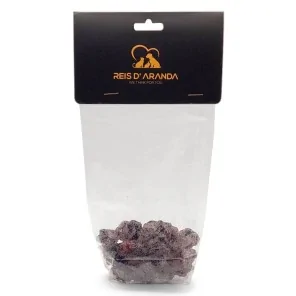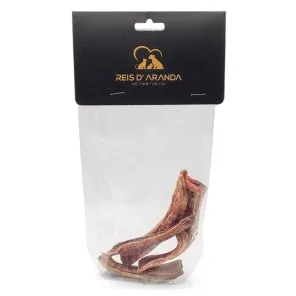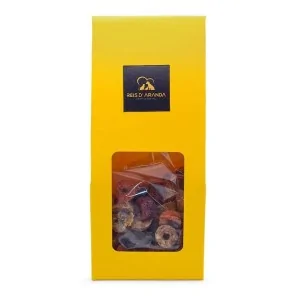Its name says it all: the Vienna blue rabbit comes from Austria. Not only is it beautiful with its shiny blue-grey...
TEDDY DWERG RABBIT VS ANGORA RABBIT
Many times we can see advertisements from shops or individuals without any knowledge about the breeds that exist in rabbit breeding (either for consumption or fantasy) offering "Teddy" or "Dwarf Angoras" that are far from being real Teddy Dwergs or Angora Dwergs (Dwarfs), most of them being mongrels.
At present, the hairiest breeds of rabbits are the Teddy Dwerg, the Teddy Lop (Belier Teddy) and the Angora (which includes 5 different varieties, each one with its own standard and specific characteristics).
MORPHOLOGICAL DIFFERENCES BETWEEN THE ANGORA AND THE TEDDY DWERG RABBIT
The first thing we have to be clear about is that the Angora rabbits (any of its variants) and the Teddy Dwerg have very notable morphological differences, the characteristics of the fur also differ between one and the other but we will study this in the following point.
The Teddy Dwerg is one of the smallest breeds of dwarf rabbits in existence with an adult weight between 800 gr and 1.500kg (according to the standard), the usual weight being between 1kg and 1.350kg (females under 1kg should not be bred, as this can be dangerous for them).
They originate from the area of the Netherlands and Germany, their ears are about 4cm long and they have a much thicker and more fragile coat than the Angora. It is a quiet breed but more energetic than any of the Angora and is admitted in all colours and patterns, even the more exotic and creative ones that are not recognised in other standards. The litters they have rarely exceed 4 gazapos, plus they possess the gene for dwarfism.
The Angora is divided into 5 different breeds:
- English Angora
- French Angora
- Giant Angora
- Satin Angora
- Angora Dwerg (Dwarf)
The differences between a Teddy Dwerg and an English, French, Giant or Satin Angora are very clear: size, ears, weight, colours? And we can see it in more detail in the article we have about the Angora, but if we take an Angora Dwerg (Dwarf), how does it differ from a Teddy Dwerg? To begin with the Angora Dwerg weighs between 1.500kg and 1.750kg (the minimum weight being 1.250kg), its coat is much longer, the ears measure around 6cm and they only come in four different colours: black, yellow, REW (white with red eyes) and BEW (white with blue eyes), it is not usual for them to have hair on their face (in this area it is shorter) and their eyes are not as bulging as those of the Teddy Dwerg. As far as litters are concerned, it depends on the variety, but litters usually comprise between 6 and 13 gazapos.
DIFFERENCES BETWEEN THE COAT OF THE TEDDY DWERG AND THE ANGORA WOOL
Here we get a little more technical, as the terms of genetics come into play.
The coat of the Teddy Dwerg is formed by the M gene (mane) and the L gene (wool), being the same as that found in the Lionhead DM (Lionhead Double Mane) only that in the case of the Teddy Dwerg the long hair is not limited to a specific area of the body, but is general. It is a coat that has a length (well groomed) of approximately 8 cm, being a little shorter on the legs and belly area, this coat should be brushed with care as it breaks easily and there is no need to shear them as with the Angora. It is a coarse coated coat with a softer, denser undercoat, which can take several months to grow if clipped or plucked.
The Angora, on the other hand, has no hair as such, but only has wool (gene L), is much longer (about 10cm minimum), silky texture and slightly shiny appearance (slightly duller on the belly), this wool must be sheared every 2 months with clippers and has a much faster growth. It has to be brushed with an extra long bristled poodle brush and also using a cold air blower to be able to reach the roots and remove all traces of old, damaged wool or knots that can be found.
Angora wool is mainly used for knitting, while Teddy Dwerg wool is not used as its texture and length is not suitable.
DIFFERENCES IN THE CARE OF THE TEDDY DWERG AND THE ANGORA COAT
As we have explained above, both breeds must be brushed with suitable elements (brushes, brushes and quality combs), and this cannot be done dry as we could break the coat, how do we wet it without bathing it? By using a styling spray, which will slightly dampen the outer layer of the coat and prevent breakage, it will dry very quickly in a matter of minutes and will give the coat shine, flexibility and a pleasant smell.
The Teddy Dwerg, unlike the Angora, should not be sheared unless for important reasons, such as very old animals that cannot stand grooming or become nervous, females that have been very shy or fussy during pregnancy and lactation (and have become matted), disabled animals that cannot clean themselves properly or urinate on themselves, and animals that have been rescued or have been in a situation of domestic neglect. The coat of the Teddy Dwerg is delicate and can take several months to become beautiful again, having to be brushed every day while they are babies or young (before 6 months of age) and grooming can be spaced out to 3 or 4 times a week (depending on the quality of the coat) once they reach adulthood. Special attention should be paid to conflict areas such as the throat, chest, belly, buttocks and the back of the hind legs, together with a moisturising spray.
As for the Angora (any of them), they need to be brushed every day with the help of a cold dog groomer's ejector at moderate speed, using a butter brush with extra-long bristles and a moisturising spray, paying attention to the same areas of conflict as the Teddy Dwerg. The biggest difference we find with the Teddy Dwerg as far as hair care is concerned is that the Angora has to be sheared every 2 months, we can either do it ourselves (if we know how to do it) or we will take it to a pet groomer who has experience with rabbits (or failing that, with cats), always leaving about 3cm in length on the body, while the head, ears, tail, hands and feet will be done with scissors, giving it a nice shape.
THE PERSONALITY OF THE ANGORA RABBIT AND THE TEDDY DWERG
Both are highly recommended breeds for companionship because of their affable, sociable and amusing character, this is because their long hair has been selected so that they are pleasant and can be brushed without problems, but it is true that the Angora is a little more relaxed than the Teddy Dwerg, who can be slightly more nervous.
THE PRICE OF THE TEDDY DWERG AND THE ANGORA RABBIT
A tricky subject but another of the big differences between both rabbits is the price, in Spain they are not common (as are all the pure breeds of dwarf rabbits, which are a tiny minority compared to the mongrels which are the product of the macro farms) but if we look at Europe the Teddy Dwerg has a price of between 150€ and 350€ and the Angora (especially the English one) between 200€ and 660€.
CONCLUSION
The Teddy Dwerg and the Angora are similar but extremely different breeds, with a great character that can delight families who wish to open their home to them and commit to their care.
Leave a comment
Log in to post comments
Comments
Curious article
By: Chris Brandner On 05/02/2024I didn't know the Teddy Dwerg breed, good article to be able to differentiate it from a dwarf angora.
Good article
By: Douglas On 05/02/2024Good article, here in the USA we don't have Teddy Dwerg but we do have Lionhead DM (double maned) and they are similar, the Angoras are very popular but the Teddys seem to me more comfortable to have at home.
















